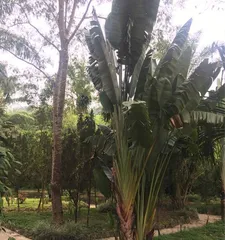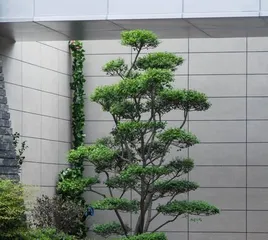With the acceleration of urbanization, the water quality of urban rivers has been significantly impacted. The lack of vegetation along the banks also makes it more difficult to restore the river's ecological environment. Planting suitable trees along the river has become a necessary task. What kind of tree species should we choose to plant?

Willow – The top choice for wind and sand protection
Willow is a deciduous tree with excellent resistance to wind and sand. At the same time, due to its flexible and less breakable branches, post-disaster repair work is also easier.
Japanese Pagoda Tree – The best choice for beautifying the environment
The Japanese Pagoda Tree is a species that can both beautify the environment and prevent soil sediment erosion. It also absorbs excess water and nutrients, reducing the destructive impact of floods.

Poplar – An important role in improving water quality
Poplar is a common deciduous tree with strong cold resistance. Its well-developed root system can effectively absorb pollutants from the water, playing a role in improving water quality.
Osmanthus – A fragrant greening tool
Osmanthus is a highly ornamental deciduous shrub with a pervasive fragrance, making the riverside environment more pleasant. It can also absorb harmful substances in the air, improving the air quality.
Elm – A good helper for soil conservation
Elm is a relatively common deciduous tree with flexible branches and dense foliage. It can effectively prevent soil erosion, providing strong support for soil conservation.

Maple – An excellent choice for beautifying the urban landscape
Maple is a deciduous tree, and because of its diverse and changing leaf colors, it has become a major tree species in many urban green belts. At the same time, maple trees can also absorb harmful gases emitted by vehicles, improving the urban environment.
Ginkgo – An important part of ecological maintenance
Ginkgo is a deciduous tree with good ecological adaptability. It can effectively absorb carbon dioxide and various exhaust gases, keeping the urban air fresh.
Camphor Tree – A fragrant and fresh environmental regulator
Camphor tree is a common evergreen tree with a strong fragrance. It can make the riverside environment fresher and more pleasant, and it can also absorb excess water, mitigating the impact of floods.
Vitex – A good helper for desert control
Vitex is a plant that can both beautify the environment and control desertification. Its roots go deep into the soil, effectively fixing the soil in desert areas and preventing sand dunes from moving.
Red Maple – A creator leading environmental change
Red Maple is a beautiful deciduous tree, highly favored for its unique leaf shape and color. At the same time, it can absorb large amounts of CO2, playing a role in environmental protection.
Crabapple – An "air purifier" for air purification
Crabapple is a common deciduous shrub with good ornamental and aromatic qualities. It can also absorb harmful substances in the air, purifying the air and playing a certain role in improving the urban environment.
Goji Berry – A natural barrier for riverbank protection
Goji Berry is a drought and cold-resistant deciduous shrub that can effectively restore riverbanks. It can also absorb excess water and nutrients, reducing the impact of floods.
Black Locust – A good choice for managing wet sites
Black Locust is a common deciduous tree that prefers to grow in wet areas. It can effectively absorb excess water, improving the wetland environment.
Pine – The best choice for soil improvement
Pine is a common evergreen tree. Its needle-like leaves can effectively improve the soil and enhance its fertility. At the same time, pine trees can also absorb harmful gases, improving the urban environment.
Red-leaf Plum – A greening tool with both flowers and fruits
Red-leaf Plum is a beautiful small deciduous tree, highly favored for its red leaves. Its fruits also have good ornamental and edible value, making it an important part of riverside greening.
Choosing suitable riverside tree species can not only beautify the environment but also improve the ecological environment. In riverside greening, we should select appropriate tree species for planting based on environmental characteristics and vegetation needs. Only in this way can we truly achieve harmonious coexistence between ecology and the city.